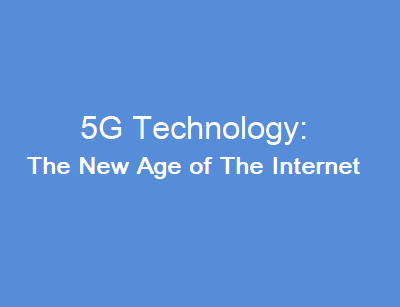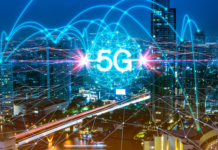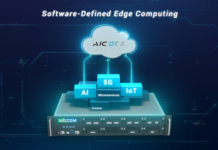
5G Technology
The world has witnessed a tremendous rise in technological evolutions in the last few years. The rise of the internet, the prevalence of smart gadgets, etc., are all part of the revolution worldwide. 5G is the new addition to this storm and has become a hot topic of discussion in quite a short time. 5G refers to the fifth generation of the internet. Based on what the previous internet generations had to provide, 5G is set to provide users with much faster connection speeds. Also, being more dependable with greater capacity and lower response times. It is known as ‘the network of networks,’ because it unifies several existing standards and crosses various industries and technologies, and is an enabler of Industry 4.0. With the growing prevalence of connected devices across the globe, the analysis reports by MRFR suggest that the global market for 5G technology is anticipated to acquire a valuation of approximately USD 612.58 Billion by the end of 2030. According to these reports, the global market is anticipated to flourish at a robust CAGR of over 40.2% during the assessment timeframe. Across the globe, 5G networks are anticipated to own 1.7 billion users over the year 2030.
5G Work: Operation
Wireless communications systems utilize radio frequencies to transmit information via the air. 5G works in the same manner but utilizes greater radio frequencies that are less littered. This enables it to transmit more data at so must faster pace. These more excellent bands are known as ‘millimeter waves. They were primarily unemployed but have been open for certification by regulators. They had been widely undisturbed by the public as the equipment to utilize them was highly expensive and inaccessible. While more fabulous bands are faster at transmitting information, there can be issues with sending over considerable distances. They are jammed by physical objects such as buildings and trees. 5G will use several output and input projections to avoid this challenge to boost capacity and signals across the wireless network. It will also utilize tinier transmitters. Positioned on street and buildings furniture, as conflicted to utilizing single stand-alone masts. Present projections state that 5G will be capable of supporting up to 1,000 more devices per meter than 4G.
The technology will also be capable of slicing a physical network into several virtual networks. This implies that users will be able to offer the proper slice of the network based on how it is being utilized and thus better manage their networks. This states that the user can utilize various slice capacities based on importance. So, a single user streaming a video would utilize a distinct slice of a business. At the same time, simpler devices could be parted from more complex and insistent applications, such as controlling autonomous vehicles. There are also strategies to enable organizations to rent their insulated and isolated network slice to keep them from vying Internet traffic.
5G Network: Advantages
One might question, what is so unique about 5G?
One of the primary benefits of 5G networks is the high speed offered. On the other hand, there are also benefits regarding abridged latency- implying rapid response times and fast download speeds. This opens affluence of potential applications across the field, given better operational efficiency. Amid the applications for 5G is superfast broadband with no requirement for 5G mobile telecommunications, landlines, holographic technologies, driverless cars, remote healthcare, televisions, and the creation of smart factories with 5G communication as well as car-to-car communication. Most of these technological developments will be impacted by lowered latency, enabling 5G devices to answer orders a little faster.
The 5G technology will also feature a higher capacity than earlier network technologies. There will be access to a higher spectrum at greater frequencies, implying that networks will be able to manage more high-demand applications at the same time. As stated earlier, the primary selling feature of the 5G technology is associated with the network’s speed, with some saying that the highest speeds may ultimately surpass 10Gps. Primary speeds are fixed to be lesser, with EE claiming peak speeds of more than 1Gps, which is still on average between 100-150 Mbps more than 4G speeds that must equal around 130-240 Mbps in total.
On the other hand, several aspects must be considered like distance from the base station, number of connected users, etc.
5G: Ready to Change Everything
5G seems ready to transform various products, industry areas, and services. While the 5G technology will provide performance boosts for mobile technology, there are several other applications that it looks ready to influence.
Source: https://www.marketresearchfuture.com/reports/5g-technology-market-2988



















